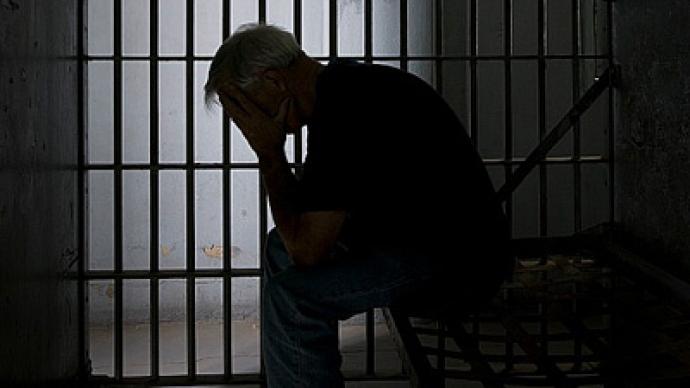Solitary Confinement Widely Used in US

As Amnesty International released its 2011 Human Rights Report, it issued harsh criticisms at dozens of countries, from Afghanistan to Uzbekistan, from China, to Zimbabwe.
There are also criticisms of the United States for detentions at Guantanamo Bay and in Afghanistan, but there was little mentioned about a form of punishment that's becoming more and more widespread: the use of solitary confinement.When you think of the measurements, six by nine by twelve, you may think of a large box or a tiny restroom, but for more than 25,000 people in America, those are the measurements of their home. At times it is a space reserved for the most dangerous criminals in the world, but for many others, like Robert King, it is a space reserved for the innocent. “It was horrible, miserable, terrible,” King says. Locked up for a robbery he did not commit, King spent 31 years behind bars, 29 of them in solitary, after prison officials discovered he was a member of the Black Panthers and, he says, pinned a murder charge on him.“It’s not so much the physical restraints, but the psychological restraints that overwhelm you,” King says.Now cleared, he advocates against the use of solitary confinement and fights for the release of two of his friends, Albert Woodfox and Herman Wallace, who are still behind bars.Innocent or guilty, the conditions are harsh. Many say they are even cruel and inhumane and can result in permanent psychological damage, self-mutilation and even suicide.Juan Mendez, the UN. special Rapporteur on torture, slammed the widespread use of solitary confinement for prolonged periods of time, since it’s not uncommon for those placed in solitary to be there 23 hours a day.“It’s not the same to put somebody in solitary confinement for one day and to put him or her there for months,” Mendez says.Lynn Parramore, a fellow at the Roosevelt Institute, calls solitary a “form of torture,” and says that that form of imprisonment leaves people mentally damaged and often even more dangerous to society upon their release.According to Parramore, such imprisonment has the affect of “deranging and mutilating the human brain.”Overthe last two decades thenumber of supermax prisons in this country has grown to more than 50.David Fathi, Director of the ACLU’s national prison project, says the boom was not a result of higher crime. “What happened in the 1990’s . . .There was really a wave of hysteria super predators and predictions of a wave of violent crime that never really materialized,” Fathi says.What did materialize was hundreds of millions of dollars devoted to the business of building prisons.“If you look at how these places came to be built in many states, it wasn’t the corrections professionals, it was the politicians,” Fathi says.Many private prisons in America are owned by the Corrections Corporation of America. Each year the CCA spends millions of dollars lobbying politicians to build more. Politicians in turn bring jobs to their districts and beef up their own credentials as being tough on crime Still, some politicians fight the system.“I don’t know of any place in the world where people are held in solitary confinement for more than three years – China, Russia, Eastern Bloc, dictatorships, nowhere,” said Rep. John Conyers (D-MI).America’s most famous solitary prisoner is Bradley Manning. He was held for more than eight months at the Marine Corps Base in Quantico, VA.In a letter, the former Army Private tells of being stripped of his clothes and his prescription eye glasses. And on the rare occasions he is allowed out, his hands and feet are shackled.“This is not something that anybody should be subjected to except in the most extreme circumstances which there’s no evidence that this is and also posed another problem which is his ability to get an adequate defense,” said Stepehen Soldz, the president of Psychologists for Social Responsibility.The Manning case is yet another example of solitary confinement being used punitively, rather than for safety reasons.Another example is Kendall Gibson, who spent ten years in solitary because he refused to cut his dreadlocks, which he believes represent his Rastafarian faith. It was a violation of a Virginia law that stated that inmates must not have beards or wear their hair below their collar. Perhaps most disturbing is the number of children in solitary cells – kept there to protect them from adult prisoners. It is vicious cycle of injustice that reaches across the lines of age, race and gender. And even innocence. For King, it is accompanied by another reality: in his words – you may leave solitary, but solitary never leaves you.













